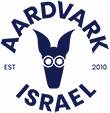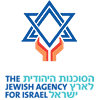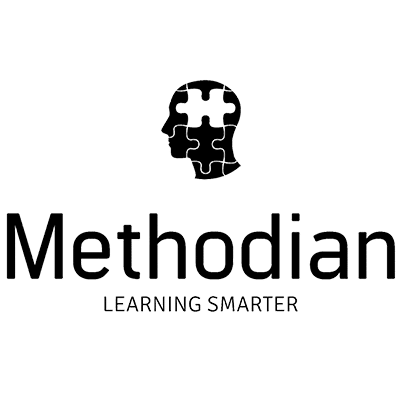Dear Parents,
With some of our students currently in Nepal, we were a smaller group than usual, but what we lacked in numbers we made up for in spirit!
On Sunday evening, the staff challenged the students to find their inner superhero. Each student needed to come up with a superhero name, a costume, a superpower, and a super weapon. Michael Wolman summarized the activity best, “Seeing our counselors as superheroes was a good way to get us into the spirit of Purim. They demonstrated to us the duality of this festival. The peril and risk that the Megillah explores contrasted with the merriment of the holiday was summed up in this program by how much they reinforced our Jewish commitment to protect our people hood.”
On Monday evening, we joined the Tel Aviv group at the Yitzhak Rabin Center in Tel Aviv for a night to learn about politics in Israel and experience what the Israeli election is all about. Our students learned about the Israeli political system and the burning topics at the core of the parties’ campaigns. The students listened as the politicians debated and tried to convince the students to vote for their party.
Shira Vilvovsky wrote, “On Monday night, we went to Tel Aviv to the Yitzhak Rabin Center to attend a MASA political panel. The first part of the night was a basic explanation of how Israel’s political parliament system works. This explanation was lead in 3 different language groups. English, Russian, and Spanish. I attended the Russian group, which was smaller and more personal. The second part of the event was a panel of representatives from some of the bigger parties. The parties were: Likud, Labor Party, The New Right, Meretz, Blue & White, Yisrael Beitenu, and Union of the Right Wing Parties. It was a really nice crash course on the major parties, and I learned a lot more about what parties I personally would like and which ones I would not. They also squabbled quite a bit, which was very entertaining to watch. The event also had free food, including sushi and desert, which really elevated it to “good event” status.”
On Tuesday Morning, the students spent the day visiting Hirbet Madras, known as Churvat Madras in Hebrew, the remains of an agricultural village located in Park Adulam. The Hirbet Madras ruins include houses, burial caves, hiding caves, a columbarium cave, and a burial pyramid. The students enjoyed exploring, re-enacting the story of David and Goliath, and photographing all the beautiful flowers that have started blooming!
On Tuesday Evening, we met Amotz Eyal, the founder and manager of TPS, the only Israeli news agency. Tazpit Press Service (TPS) is an international Israeli news agency (NGO) that provides in real time, accurate and reliable news information for international media outlets seeking news coverage on Israel and the Middle East. The agency reports on a wide range of topics, economics, security, politics, technology, scientific developments, agriculture, human stories and more. TPS is the first and only news agency in the world whose professional staff is made up of journalists, photographers, and editors that rely on a vast network of volunteers who work to present the broader Israeli picture. Their staff and volunteers work to ensure that the many perspectives and complexities of Israel are accurately and professionally portrayed to world media. Amotz talked about the news and media around the world, and how it covers the news in Israel from one perspective only.
Sam Leopold said, “Mr. Eyal came and spoke to us. He started an organization displaying the media bias against Israel. He, along with other loyal Israelis, does this by taking pictures during battles or protests and comparing them to those taken by mainstream media. It was great to see how much people truly care about the country, even if it means putting your life on the line-not only in the army, but also in the media. The most important thing we learned, is that when we read the news is to check who is behind the articles, and check the story’s from different perspectives to get to the real and whole picture.”
Internship in the Spotlight – Hi! My name is Noah Spivak. I am from Rochester, NY. I work as an intern for Adi Yair. Adi is a fashion designer based in Jerusalem, and the focus of her clothes is patterns made on the loom. I am helping her with multiple tasks around the studio. I have cut out copies of her stencils, which will be sent directly to the fabric cutter. I have also taken measurements of her finished garments and taken seams out of old garments so the fabric can be reused. Lastly, I have recently started sewing samples as well as shirts on a sewing machine. I have learned a lot from Adi and my internship and I cannot wait to take these skills with me to college where I will be studying architecture.”
This week on Selah we visited Beit Tzvi – Israel’s School for the Performing Arts in Ramat Gan. There we met Oleg, our drama instructor who took us through our paces warming up for our Masks Workshop. We began with a short introduction to the history of theater before learning about the Commedia dell’arte – 17th century Italian dramatics. We connected with masks and then improvised a performance. The workshop was intended to be a warm-up for Purim and Rabbi Marc ended the morning with a class on the history and symbolism of dressing up in Jewish tradition. We looked at the Megilla and other examples of disguise in the Tanach before we heard how the first mention of Purim costumes date all the way back to the 13th century. Later in the week, we had our regular Learning Space. Some of the classes were focused on joy and others on change. We had a workshop on improving our character and a jam session about Tallit and Tefillin
This week in Parsha and Pizza we began the third book of the Torah – Vayikra – Leviticus. This week’s Torah portion introduces us to the world of sacrifices. Although sacrifices do appear earlier in the Torah, this is the first time that a uniform framework and rules are given over to the people. Rabbi Marc explained the four different types of sacrifice that were offered during temple times and we discovered through the details that most were animal offerings (Kosher only) although some could be grain-based breads. We mapped out some of the classic reasons given for why we give Karbanot (sacrifices in Hebrew, from the root word karov – קרוב – which means closeness) and ended the session with everyone choosing their favorite type of sacrifice. The clear winner was the Shleimim that was meant to bring Shalom – peace – between God and the person offering it or between the person and their guests. The rule was that this sacrifice needed to be shared with people and eaten together with priests, family, friends or the poor. Some students noticed that it is not too different from having a barbecue!
Soon we celebrate Purim, we are getting in the spirit of things and can’t wait to share it all with you!
All the best,
Natali
























